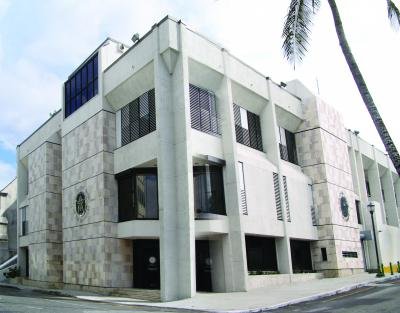NASSAU, BAHAMAS- The private vacation rental market continued to see healthy demand in the third quarter, according to data from the Central Bank, with total room nights sold increasing by 24.9 per cent over the same period in 2018.
According to the regulator’s Quarterly Economic Review for the third quarter of 2019, data from AirDNA showed there was a healthy demand for off–resort business persisted during the third quarter, with both average pricing and sales volume improved.
The quarterly report provides an examination of the performance of the domestic economy, as well as sectoral developments, principally during the period July to September.
“Total room nights sold advanced by 24.9 percent, over the same period in 2018. An analysis by rental category showed that bookings for entire place listings increased by 25 percent year-on-year, and by 23.1 percent for hotel comparable listings,” the Central Bank reported.
It added: “Further, the average occupancy rate for hotel comparable listings firmed by 3.1 percentage points to 45 per cent, relative to the prior year, supplemented by a 5.3 percent rise in the average daily rate to $177.04. In addition, entire place listings recorded an average occupancy rate of 47.6 percent, representing a 2.8 percentage point increase over the third quarter of 2018, with the average daily rate decreased by 10.3 percent to $395.10.”
The regulator also noted that according to the latest statistics from the Nassau Airport Development Company Limited (NAD), departure trends were mostly positive during the review quarter, as total departures rose by 7.1 percent, albeit a slowdown from a 15.4 per cent expansion in 2018.
“This outturn was attributed to an 8.1 per cent increase in United States departures, after a 14.9 percent advance last year. In contrast, the non-United States international component declined by 0.3 percent, a reversal from the 19.4 percent expansion in the prior year,” the Central Bank stated.
The Central Bank noted that overall, the country’s tourism sector output was “mildly positive” during the third quarter.
“However, gains were considerably narrowed, owing to the passage of Hurricane Dorian in September, which reduced capacity in Grand Bahama and left Abaco mostly offline. Developments were supported largely by growth in the New Providence market and the unaffected Family Islands, which contributed to the increase in both hotel room capacity and the private rental markets,” the regulator said.
The Central Bank added: “Initial data from the Ministry of Tourism revealed that total visitor arrivals grew by 2.3 percent, markedly lower than the 19.8 percent growth in 2018.
“A further breakdown showed that high value–added air arrivals rose by 1.3 percent to 0.4 million, following a 19.9 percent expansion in the previous year. Similarly, the dominant sea component increased by 2.5 percent to 1.2 million visitors, after a gain of 19.8 percent in 2018.”
According to the report, disaggregation by major port of entry revealed that total visitor arrivals to New Providence rose by 2.9 percent to 0.9 million, compared to a 9.6 percent expansion a year earlier.
“Underlying this outturn, air arrivals grew by 5.6 percent, while sea traffic edged up by 1.7 per cent,” it read.
“Further, total visitors to the Family Islands increased by 9.2 percent to 0.5 million, albeit significantly lower than the 45.1 percent surge last year, as the 11.7 percent gain in sea passengers, overshadowed the 7.3 percent decline in air arrivals.
“In contrast, reflective of the hurricane-related setback, visitors to Grand Bahama decreased by 23.3 percent to 0.1 million, vis-à-vis a 13.2 percent increase in 2018, as both air and sea arrivals registered notable declines of 34.4 percent and 22 percent, respectively,” the Central Bank stated.






